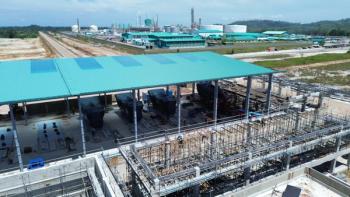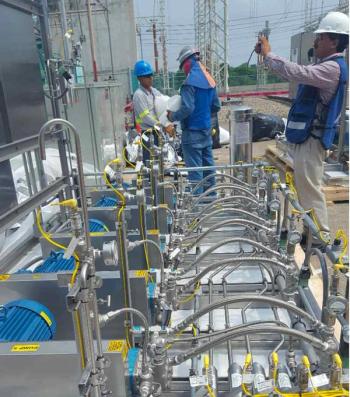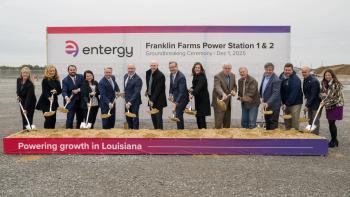
Turbo Symposium 2014 at Houston showcases industry’s latest
The 43rd Turbomachinery and 30th Pump Users Symposium took place in Houston in September under the auspices of Texas A&M University’s Turbomachinery Laboratory. Dr. Dara Childs, Director of the Turbomachinery Lab commenced proceedings, announcing a highest ever attendance of more than 6150 attendees from over 50 countries.
Those in attendance represented the petrochemical, oil refining, oil and gas production utility, power, aerospace and other related industries. And they were treated to a program of lectures, tutorials and case studies spanning every aspect of turbomachinery and pump design operation and maintenance.
Lessons in turbo history
Paul Cooper, Founding Member of the Pump Advisory Committee, delivered the keynote. His theme, advancing the pump and turbomachinery innovation by building on the past, enabled him to deliver a history lesson on the rich history of the Turbomachinery and Pump Symposium as a venue to showcase the latest and greatest in the industry. He noted the many groundbreaking papers delivered there over the years, all still available in an extensive database.
“The archives of the symposium can help us in achieving goals such as better water injection under extreme pressure for deep sea wells,” said Cooper. “As the wellhead pressure is much greater than the hydrostatic water pressure at the sea bottom, injection pumps need to be able to generate about 15000 psi, which is at least twice the current maximum.”
Areas requiring developmental attention to reach such high pressures, according to Cooper, include minimizing pressure pulsations and stresses, vibration, resonance, cavitation damage and fluid dynamic thrust loading. To avoid cavitation damage, he suggested that the industry needs impellers than can operate at higher inlet tip speeds without cavitating.
Offshore oil and gas fields
With the oil and gas sector experiencing a major boom, we are seeing a rise in the deployment of turbomachinery offshore. Floating Production Storage and Offloading Vessels (FPSOs), for example, are a popular choice for large offshore oil and gas fields. Major clusters of these ships are found in Brazil, the North Sea, West Africa, and in the Asia Pacific region.
“FPSOs, which are giant ships with gas processing plants on them, are found near the largest offshore oil and gas fields,” said Harry Miller, Dresser Rand’s Director of Emerging Technologies. “As there can be up to an 18 percent roll angle aboard, this amount of motion has to be considered in the engineering.”
That’s why the drivers and onboard compressors have to be packaged carefully with special base plates that compensate for pitch and roll while minimizing torque, bending and vibration. Dresser-Rand supplies three base package designs: a torque box, a torque tube or wide flange beams to support the compressor package.
While FPSOs are a proven technology, subsea compression is still earning its stripes (Turbomachinery International Sept/October 2014). Yet the topic was front and center at the Turbo Symposium and was one of the most talked about subjects within the exhibit floor.
Thom Eldridge, Senior Rotating Equipment Director at Shell, gave an overview of the subject of subsea processing which encompasses pumping, electrical, separation, reinjection and compression. While early work in subsea boosting used turbine drivers, the current trend is towards electric-motor driven equipment. Particularly when it comes to subsea compression, water depths and the hermetically sealed nature of the packages require an electric motor.
You can read the rest of this article in the 2015 Turbomachinery handbook.
Newsletter
Power your knowledge with the latest in turbine technology, engineering advances, and energy solutions—subscribe to Turbomachinery International today.





